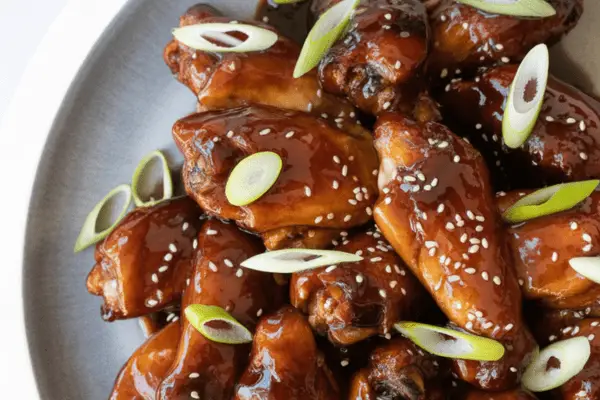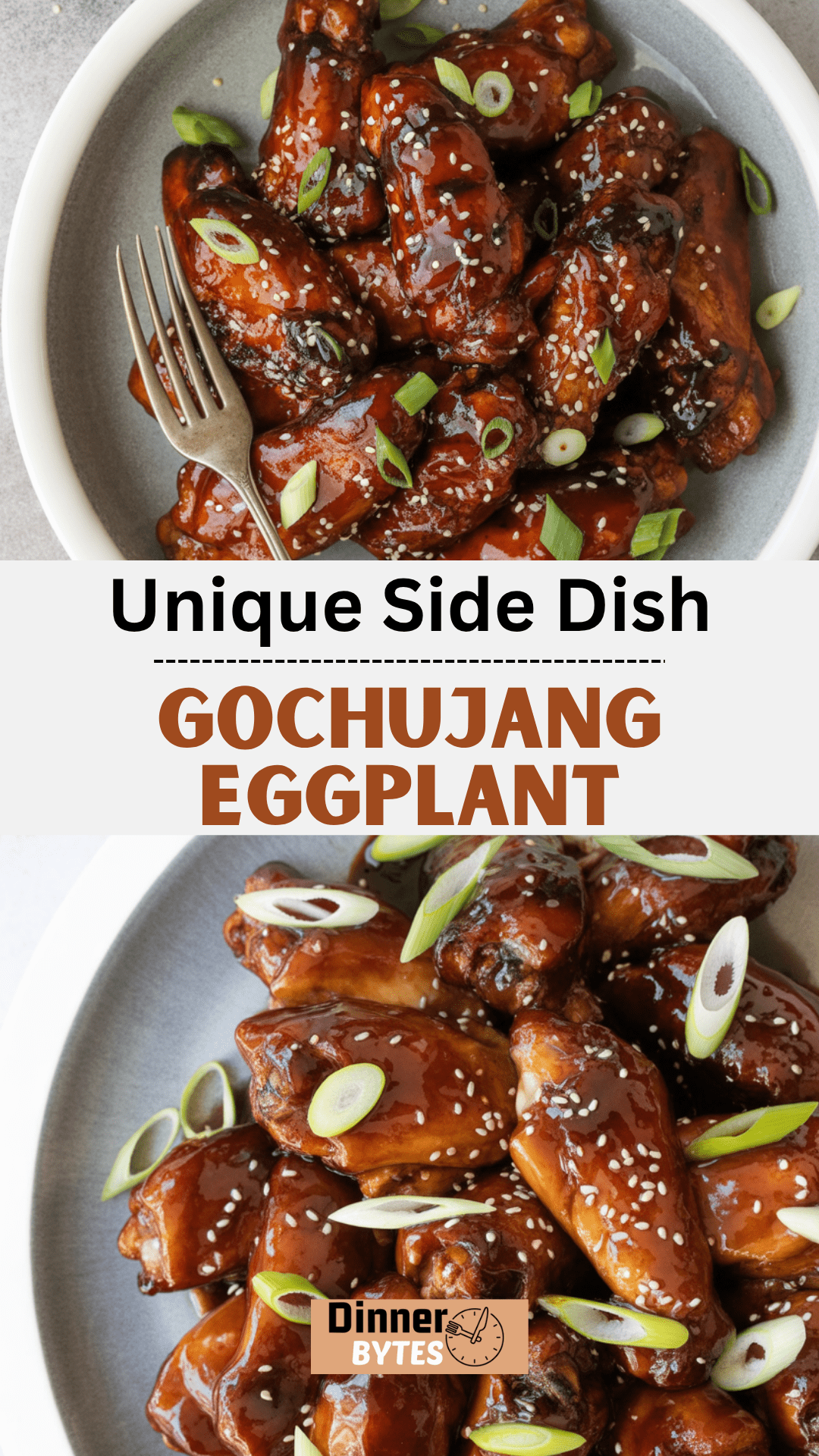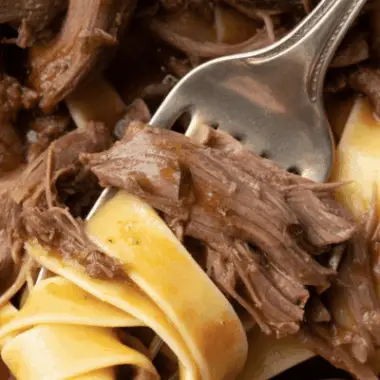Eggplant is one of those vegetables that really soaks up flavor, and this Gochujang Eggplant proves it in the most delicious way. I remember the first time I tried this dish — I had a jar of gochujang sitting in the fridge for ages, and one lonely eggplant in the crisper drawer. I wasn’t expecting much, but wow, the result was so satisfying. The gochujang glaze gets beautifully sticky and caramelized under the broiler, while the eggplant turns buttery soft on the inside.

What makes this dish such a keeper is how quick and adaptable it is. On busy weeknights, I’ll serve this alongside some leftover rice and fried eggs — dinner, done. And when friends come over, I love plating it up as a starter with toothpicks and extra sesame seeds. It always gets a ton of compliments.
Whether you’re serving it up with Korean short ribs or keeping it meatless, this recipe delivers deep flavor with very little effort.
What is Gochujang?
If you’ve never cooked with gochujang before, you’re in for a treat. It’s a thick, fermented Korean chili paste that’s spicy, sweet, salty, and full of umami. I like to think of it as a flavor bomb in a jar. A little goes a long way, and once you try it, you’ll start finding all kinds of ways to sneak it into your cooking — stir-fries, marinades, even mayo for sandwiches.
Pro tip: Store your gochujang in the fridge in a sealed container. It keeps well for months, and a small tub can last through tons of recipes.
Ingredient Notes and Substitutions
Japanese Eggplant: I prefer Japanese eggplants because they’re tender, cook quickly, and don’t need to be salted like larger globe eggplants sometimes do. If you can’t find them, go with small globe eggplants or even Chinese eggplants — just slice them thinner so they cook evenly.
Gochujang: This is the star of the show. If you’re new to it, look for it in the international aisle or at any Asian market. If you need a milder version, some brands offer “mild” gochujang, which is great for kids or spice-sensitive eaters.
Honey: I usually reach for honey to balance the heat, but maple syrup is a fantastic swap if you’re cooking for vegans. It adds a lovely depth and pairs beautifully with the chili paste.
Sesame Oil: Go for toasted sesame oil — the kind with that deep, nutty aroma. It’s meant for finishing dishes, not for high-heat cooking. I always keep a small bottle in my pantry and use it sparingly to boost flavor right at the end.

Tips and Tricks
- Don’t skip the broiler. It takes the glaze from tasty to addictive, giving it that charred, caramelized edge. Just stay close — I’ve burned more than a few trays thinking I could step away for “just a minute.”
- Brush the glaze on thick. Don’t be shy with it! The more you coat, the more flavor clings to the eggplant.
- Let the eggplant sit after roasting. A few minutes of resting time helps the inside become even creamier. It’s like magic — worth the short wait.
- Make extra sauce. It’s fantastic on tofu, chicken, or even spooned over rice. I usually double the batch and stash it in the fridge for later in the week.
Serving Suggestions
This Gochujang Eggplant makes a bold side dish, but it’s just as good as a main. I love pairing it with:
- Steamed jasmine rice and a fried egg for a meatless meal
- Korean BBQ favorites like bulgogi or short ribs
- A fresh cucumber salad to cool down the heat
- Tucked into a wrap with shredded carrots and cabbage for lunch the next day
If you’re hosting, serve it warm or at room temperature with a sprinkle of scallions and sesame seeds — it holds up really well on a party table.
Make-Ahead Tips
While the eggplant tastes best fresh, you can definitely prep ahead to make things easier. Slice the eggplant in the morning and keep it in an airtight container. Mix the glaze ahead of time and refrigerate. That way, when you’re ready to cook, it’s just a quick roast and broil away from the table.
I’ve also roasted the eggplant earlier in the day, then glazed and broiled it right before dinner — still delicious, and perfect for when you’re trying to juggle multiple dishes.
Storage
Leftovers don’t last long in my house, but if you have any, they’ll keep well in the fridge for up to 3 days. Store them in a sealed container and reheat in a 350°F oven until warm. You can also enjoy the slices cold or at room temperature — they’re surprisingly good tucked into a sandwich or added to a grain bowl.
Avoid microwaving if possible, as it can make the texture a bit soggy.

FAQs
Is gochujang spicy?
It does have a kick, but it’s not overwhelmingly hot. The heat is balanced with sweet and umami flavors. If you’re sensitive to spice, start with less gochujang and taste as you go — you can always add more.
What can I use instead of gochujang?
If you don’t have gochujang, a quick substitute is a mix of miso paste, a bit of sriracha, and honey. It won’t be exact, but it still gives you that punchy, sweet-savory flavor. Thai chili paste can work in a pinch too, though it’s often spicier.
Final Thoughts
Gochujang Eggplant is one of those recipes that turns a simple veggie into something special. It’s bold, flavorful, and surprisingly easy — the kind of dish that impresses without a ton of effort. Whether you’re adding it to a weeknight meal or dressing it up for a dinner party, it always delivers.
Gochujang Eggplant

Eggplant is one of those vegetables that really soaks up flavor, and this Gochujang Eggplant proves it in the most delicious way.
Ingredients
- Japanese Eggplant: I use Japanese Eggplant in this Korean eggplant recipe. It is long, slender, and has a very mild flavor. Other varieties of eggplant, such as globe eggplant, will also work.
- Gochujang: This flavorful Korean chili paste is a staple in Korean cooking. Gochujang can be found in the international aisle of most grocery stores.
- Soy Sauce: I recommend using low-sodium soy sauce because gochujang can be salty.
- Honey: For a vegan option, maple syrup pairs very well with gochujang.
- Sesame Oil: Use dark or “toasted” sesame oil, available in the international aisle. Dark (toasted) sesame oil is intended for flavoring. Light sesame oil, like canola, vegetable, or olive oil, is designed for general cooking.
Instructions
- Gather and prep all the ingredients
- Preheat your oven to 400 degrees
- Place the sliced eggplant on a rimmed baking sheet lined with aluminum foil
- Brush both sides of the eggplant slices with canola or vegetable oil
- Bake the eggplant for 15 to 20 minutes or until tender and easily pierced with a knife
- While the eggplant is baking, whisk together the gochujang, soy sauce, honey, sesame oil, and garlic in a small bowl
- Remove the eggplant from the oven and preheat the broiler
- Brush one side of the eggplant with half the glaze
- Place under the broiler for 2 minutes
- Turn the eggplant slices over, brush with the remaining glaze and broil for another 3 minutes
- Serve the gochujang-glazed eggplant garnished with scallions and sesame seeds
Nutrition Information
Yield
4Serving Size
1Amount Per Serving Calories 345Total Fat 12gSaturated Fat 2gTrans Fat 0gUnsaturated Fat 9gCholesterol 0mgSodium 1036mgCarbohydrates 62gFiber 13gSugar 29gProtein 6g
dinnerbytes.com, occasionally offers nutritional information for recipes contained on this site. This information is provided as a courtesy and is an estimate only. This information comes from online calculators. Although dinnerbytes.com attempts to provide accurate nutritional information, these figures are only estimates.







